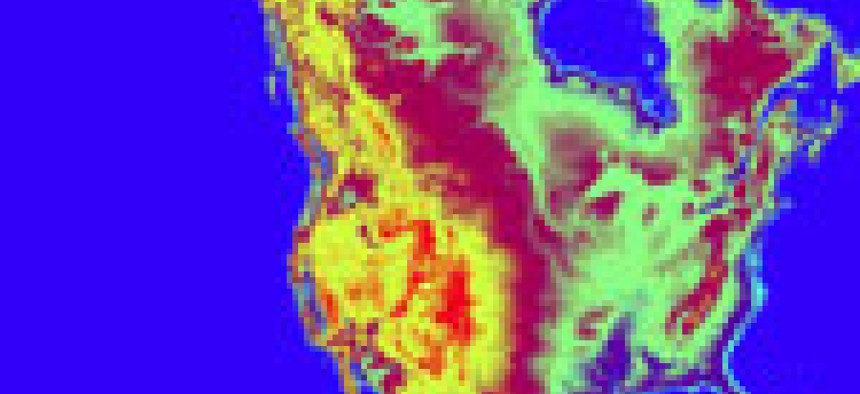Rapid Refresh sharpens NOAA's weather forecasts


Connecting state and local government leaders
New software for modeling complex weather patterns lets the National Oceanic and Atmospheric Administration update near-term forecasts hourly, with greater precision.
The National Oceanic and Atmospheric Administration has put into production a new computer model for quickly updating near-term weather forecasts, improving accuracy and extending the range of the forecasts over the entire continent.
Rapid Refresh updates the 18-hour forecast for North America every hour. The Federal Aviation Administration and the aviation industry rely heavily on the forecasts, which also are important to the energy industry for forecasting power consumption and increasingly for predicting conditions for new energy sources such as solar and wind generation, said Stan Benjamin, lead developer of the new model and a research meteorologist at NOAA’s Earth System Research Laboratory.
Related story:
Accurate flood mapping is still a work in progress
Rapid Refresh on May 1 replaced a similar program for producing hourly forecast updates at the National Weather Service’s National Centers for Environmental Prediction in Camp Springs, Md. It was developed by NCEP and the Earth System Research Lab in Boulder, Colo.
The advances are the result of greater computing power available to NCEP forecasters and steady improvements in software made over the past decade, Benjamin said.
“One of the efforts of Rapid Refresh was to take advantage of the Weather Research and Forecast Model to help in the hourly updates,” he said. WRF is a numerical, community-developed weather prediction system created by NOAA, the National Center for Atmospheric Research, the FAA, the Air Force, the Naval Research Laboratory and a number of universities.
A second important element in the new model is improved data simulation, which estimates data points on the geographical grid used to produce the forecasts.
“We’re also using satellite data more effectively now, along with radar data,” Benjamin said.
Rapid Refresh was tested for 22 months before being put into production. During testing it gave more accurate forecasts of heavy rain in the Midwest during June 2011 and better predictions of near-surface winds and low pressures during Hurricane Irene in August.
In addition to better accuracy, the new model now provides updated forecasts for all of North America, including Alaska, Canada, the Caribbean and even parts of Greenland.
The only production version of the Rapid Refresh model is being used in the NCEP in Camp Springs, Md., but an experimental version of the next release is under development at the Boulder lab.
“There is a lot more to be done in this area,” Benjamin said.

NEXT STORY: Data.gov launches developer community




